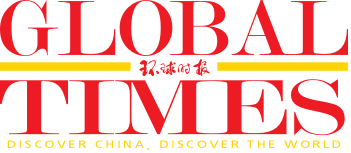
Illustration: Xia Qing/GT
Michael Kratsios, President Donald Trump's nominee to be Director of the Office of Science and Technology Policy, claimed during his Senate confirmation hearing on Wednesday that "China has emerged as both our preeminent geopolitical rival and our most formidable technological and scientific competitor."
Kratsios, a central figure in escalating the China-US tech conflict during Trump's first term, previously served as the US chief technology officer and acting undersecretary of defense for research and engineering. In his new role as Director of the Office of Science and Technology Policy, Kratsios will primarily be responsible for advising the US president on science and technology policy and overseeing up to $200 billion in federal investment in science and technology. His evident bias against China is anticipated to shape the US innovation ecosystem and influence its technological policies toward China.
Kratsios stated, "The shape of the future global order will be defined by whomever leads across AI, quantum, nuclear, and other critical and emerging technologies." Having served as the managing director of Scale AI, an American data annotation company in San Francisco, California, for several years, he is particularly focused on the development and competition in AI between China and the US.
China's DeepSeek has achieved results comparable to top US AI models, but at a lower cost and with fewer computational resources. This has led to a global reassessment of the US' dominant position in AI and even triggered a sharp decline in US tech stocks.
China has also advanced significantly in fundamental scientific research. A US report in Nature on October 23, 2024, noted that "US science is perceived to be — and is — losing the race for global STEM (science, technology, engineering and mathematics) leadership."
After the new US administration took office, a series of reforms were implemented, including significant changes in scientific research funding. In early February, the newly established US Department of Government Efficiency announced that it would drastically reduce grants to university research programs. US universities, long reliant on federal funding, now face the threat of "supply cuts."
With tens of thousands of federal scientists laid off, many key research projects have stalled, and the research ecosystem has been severely damaged. These dissolved laboratories, disrupted projects, and departing scientists cannot be easily brought back with a simple administrative order.
Faced with internal challenges and external competition, the US government deflects responsibility by amplifying "China anxiety" and intensifying its technological crackdown on China as a means to ease domestic pressures. However, China's technological advancements demonstrate that the US' decades-old strategy of suppressing China is ineffective.
In the process of scientific research and technological development, a country's leadership does not signify the failure of another. As Denis Simon, a distinguished researcher at the Washington-based Institute for China America Studies said, "The reality now is that the US must be aware of the necessity of cooperation with China."
Neither the Chinese nor the American scientific communities want to fully "decouple" in technology, and in fact, such a complete decoupling is impossible. This is something both countries must acknowledge in today's era of economic globalization. When it comes to setting emerging technology standards - whether in AI applications or life sciences development - the US cannot bypass China. The two countries need to cooperate in these fields and face global governance challenges in emerging technologies together. Their scientific advancements will not only help both countries tackle global challenges but will also ensure that the benefits of China-US technological cooperation truly serve the world.
The author is dean of the Department of Law of the University of International Relations. opinion@globaltimes.com.cn




